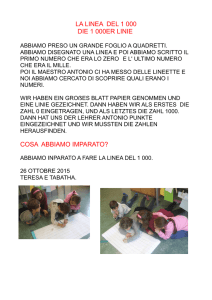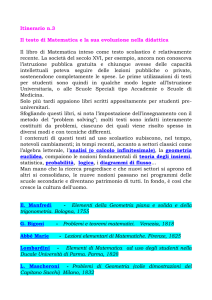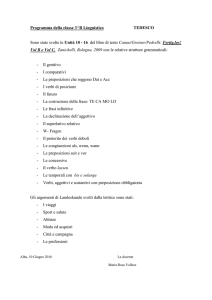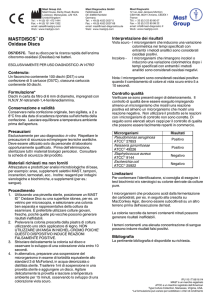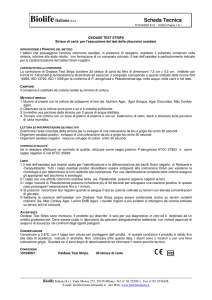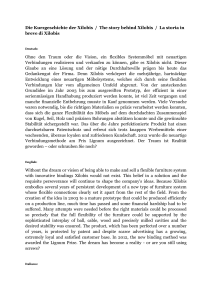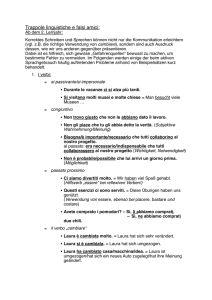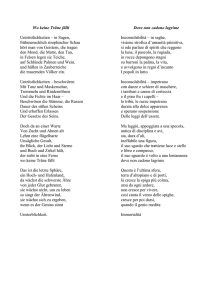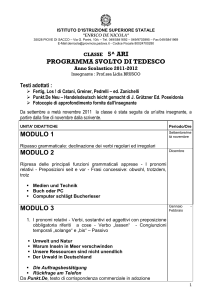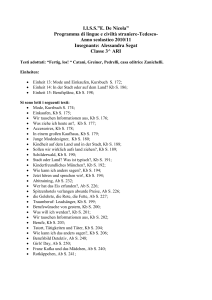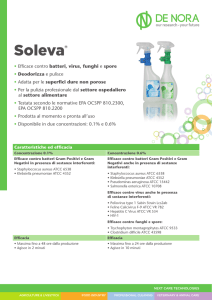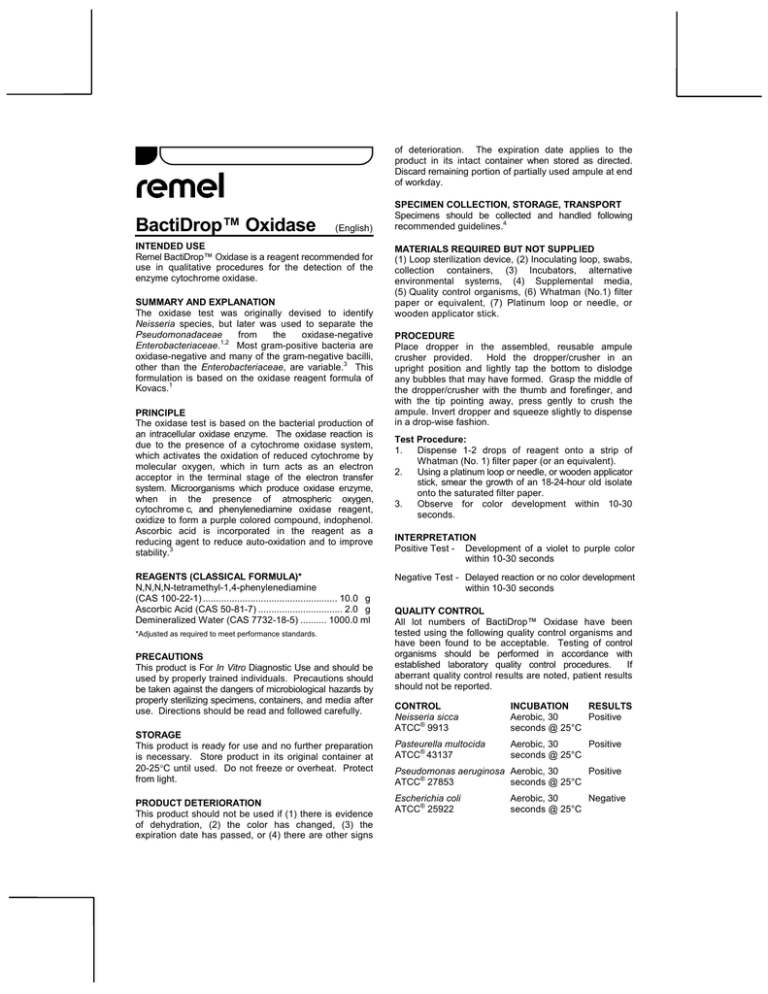
of deterioration. The expiration date applies to the
product in its intact container when stored as directed.
Discard remaining portion of partially used ampule at end
of workday.
BactiDrop™ Oxidase
(English)
INTENDED USE
Remel BactiDrop™ Oxidase is a reagent recommended for
use in qualitative procedures for the detection of the
enzyme cytochrome oxidase.
SUMMARY AND EXPLANATION
The oxidase test was originally devised to identify
Neisseria species, but later was used to separate the
Pseudomonadaceae
from
the
oxidase-negative
Enterobacteriaceae.1,2 Most gram-positive bacteria are
oxidase-negative and many of the gram-negative bacilli,
other than the Enterobacteriaceae, are variable.3 This
formulation is based on the oxidase reagent formula of
Kovacs.1
PRINCIPLE
The oxidase test is based on the bacterial production of
an intracellular oxidase enzyme. The oxidase reaction is
due to the presence of a cytochrome oxidase system,
which activates the oxidation of reduced cytochrome by
molecular oxygen, which in turn acts as an electron
acceptor in the terminal stage of the electron transfer
system. Microorganisms which produce oxidase enzyme,
when in the presence of atmospheric oxygen,
cytochrome c, and phenylenediamine oxidase reagent,
oxidize to form a purple colored compound, indophenol.
Ascorbic acid is incorporated in the reagent as a
reducing agent to reduce auto-oxidation and to improve
stability.3
REAGENTS (CLASSICAL FORMULA)*
N,N,N,N-tetramethyl-1,4-phenylenediamine
(CAS 100-22-1) ................................................... 10.0 g
Ascorbic Acid (CAS 50-81-7) ................................ 2.0 g
Demineralized Water (CAS 7732-18-5) .......... 1000.0 ml
*Adjusted as required to meet performance standards.
PRECAUTIONS
This product is For In Vitro Diagnostic Use and should be
used by properly trained individuals. Precautions should
be taken against the dangers of microbiological hazards by
properly sterilizing specimens, containers, and media after
use. Directions should be read and followed carefully.
STORAGE
This product is ready for use and no further preparation
is necessary. Store product in its original container at
20-25°C until used. Do not freeze or overheat. Protect
from light.
PRODUCT DETERIORATION
This product should not be used if (1) there is evidence
of dehydration, (2) the color has changed, (3) the
expiration date has passed, or (4) there are other signs
SPECIMEN COLLECTION, STORAGE, TRANSPORT
Specimens should be collected and handled following
recommended guidelines.4
MATERIALS REQUIRED BUT NOT SUPPLIED
(1) Loop sterilization device, (2) Inoculating loop, swabs,
collection containers, (3) Incubators, alternative
environmental systems, (4) Supplemental media,
(5) Quality control organisms, (6) Whatman (No.1) filter
paper or equivalent, (7) Platinum loop or needle, or
wooden applicator stick.
PROCEDURE
Place dropper in the assembled, reusable ampule
crusher provided.
Hold the dropper/crusher in an
upright position and lightly tap the bottom to dislodge
any bubbles that may have formed. Grasp the middle of
the dropper/crusher with the thumb and forefinger, and
with the tip pointing away, press gently to crush the
ampule. Invert dropper and squeeze slightly to dispense
in a drop-wise fashion.
Test Procedure:
1.
Dispense 1-2 drops of reagent onto a strip of
Whatman (No. 1) filter paper (or an equivalent).
2.
Using a platinum loop or needle, or wooden applicator
stick, smear the growth of an 18-24-hour old isolate
onto the saturated filter paper.
3.
Observe for color development within 10-30
seconds.
INTERPRETATION
Positive Test - Development of a violet to purple color
within 10-30 seconds
Negative Test - Delayed reaction or no color development
within 10-30 seconds
QUALITY CONTROL
All lot numbers of BactiDrop™ Oxidase have been
tested using the following quality control organisms and
have been found to be acceptable. Testing of control
organisms should be performed in accordance with
established laboratory quality control procedures.
If
aberrant quality control results are noted, patient results
should not be reported.
CONTROL
Neisseria sicca
ATCC® 9913
INCUBATION
RESULTS
Aerobic, 30
Positive
seconds @ 25°C
Pasteurella multocida
ATCC® 43137
Aerobic, 30
Positive
seconds @ 25°C
Positive
Pseudomonas aeruginosa Aerobic, 30
seconds @ 25°C
ATCC® 27853
Escherichia coli
ATCC® 25922
Aerobic, 30
Negative
seconds @ 25°C
LIMITATIONS5
1.
Select colonies for testing which have not been
cultured on selective media or media containing
glucose, as selective agents and fermentation may
inhibit oxidase enzyme activity resulting in possible
false-negative results.
2.
Weak oxidase producers, such as Pasteurella,
may appear negative within the time limits of the
test. Results inconsistent with other biochemical
reactions or with the organism should be repeated.
3.
False negative results may occur if mixed cultures
contain the two genera Pseudomonas and
Neisseria. An inhibitory substance is produced by
Pseudomonas species, which interferes with the
production of oxidase by Neisseria species.
4.
The oxidase reagent quickly auto-oxidizes and
loses its sensitivity. Unused reagent should be
discarded at the end of each workday.
5.
The oxidase test is an oxidizing reaction; oxygen
must reach the colonies for optimal results.
6.
A platinum inoculating loop or needle, or a wooden
applicator stick is recommended for use in oxidase
testing.6 The presence of any trace of iron
(nichrome) can catalyze an oxidase reaction,
resulting in a false-positive reaction.
BIBLIOGRAPHY
1.
Kovacs, N. 1956. Nature. 178:703.
2.
Cowan, S.T. and K.J. Steel. 1966. Manual for the
Identification of Medical Bacteria. Cambridge
University Press, Cambridge, UK.
3. Steel, K.J. 1962. J. Appl. Bacteriol. 25:445-455.
4. Murray, P.R., E.J. Baron, J.H. Jorgensen, M.A.
Pfaller, and R.H. Yolken. 2003. Manual of Clinical
Microbiology. 8th ed., Vol. 1. ASM, Washington, D.C.
5. MacFaddin, J.F. 2000. Biochemical Tests for
Identification of Medical Bacteria. 3rd ed. Lippincott
Williams & Wilkins, Philadelphia, PA.
6. Steel, K.J. 1961. J. Gen. Microbiol. 25:297-306.
PACKAGING
BactiDrop™ Oxidase (0.75 ml/ampule):
REF 21540............................................... 50 Ampules/Pk
Symbol Legend
REF
Catalog Number
IVD
In Vitro Diagnostic Medical Device
LAB
For Laboratory Use Only
Consult Instructions for Use (IFU)
Temperature Limitation (Storage Temp.)
LOT
Batch Code (Lot Number)
Use By (Expiration Date)
EC REP
European Authorized Representative
BactiDrop™ is a trademark of Remel Inc.
ATCC® is a registered trademark of American Type Culture Collection.
CAS (Chemical Abstracts Service Registry No.)
IFU 21540, Revised May 26, 2006
Printed in U.S.A.
12076 Santa Fe Drive, Lenexa, KS 66215, USA
General Information: (800) 255-6730
Technical Service: (800) 447-3641
Order Entry: (800) 447-3635
Local/International Phone: (913) 888-0939
International Fax: (913) 895-4128
Website: www.remel.com
Email: [email protected]
BactiDrop™Oxydase
(Français)
INDICATION
Le produit Oxydase BactiDrop™ de Remel est un réactif
recommandé dans le cadre des procédures qualitatives
de détection de l’enzyme cytochrome-oxydase.
RÉSUMÉ ET EXPLICATION
Au début , le test d’oxydase avait pour objet d’identifier
toutes les espèces de Neisseria, mais il a fini par être
utilisé pour distinguer les Pseudomonadaceae des
Enterobacteriaceae négatives à l’oxydase.1,2 La plupart
des bactéries à gram positif sont négatives à l’oxydase et
un grand nombre de bacilles à gram négatif autres que les
Enterobacteriaceae sont variables.3 Cette formulation
s’appuie sur la formule de réactif oxydase de Kovacs.1
PRINCIPE
Le test d’oxydase repose sur la production bactérienne
d’une enzyme oxydase intra-cellulaire. La réaction à
l’oxydase tient à la présence d’un système cytochromeoxydase qui active l’oxydation du cytochrome réduit par
l’oxygène moléculaire qui, à son tour, agit comme
électroaccepteur à la fin de la chaîne respiratoire. En
présence d’oxygène atmosphérique, de cytochrome c et de
réactif oxydase à base de phénylène-diamine, les microorganismes qui produisent l’enzyme oxydase s’oxydent
pour former un composé de couleur violette, l’indophénol.
De l’acide ascorbique est incorporé au réactif comme agent
de réduction pour minimiser l’auto-oxydation et améliorer la
stabilité.3
RÉACTIFS (FORMULE CLASSIQUE)*
N,N,N,N-tétraméthyl-1,4-phénylène-diamine
(CAS 100-22-1) ...................................................10,0 g
Acide ascorbique (CAS 50-81-7) ..........................2,0 g
Eau déminéralisée (CAS 7732-18-5) ..............1000,0 ml
DÉTÉRIORATION DU PRODUIT
Le produit ne doit pas être utilisé si (1) vous observez
une déshydratation, (2) la couleur a changé, (3) la date
de péremption est dépassée ou (4) d’autres signes de
détérioration sont présents. La date de péremption
s’applique au produit à condition que le récipient soit
intact et qu’il soit stocké conformément aux instructions.
À la fin de la journée de travail, le produit restant
éventuellement dans l’ampoule doit être jeté.
RECUEIL, STOCKAGE ET TRANSPORT DE
PRÉLÈVEMENTS
Les prélèvements doivent être recueillis et manipulés
conformément aux recommandations en usage dans la
profession.4
MATÉRIEL REQUIS NON FOURNI
(1) Dispositif de stérilisation en boucle, (2) boucle à
inoculation, écouvillon, récipients de prélèvement,
(3) incubateurs, autres systèmes environnementaux,
(4) milieux supplémentaires, (5) organismes de contrôle de
qualité, (6) papier-filtre Whatman (n° 1) ou équivalent,
(7) boucle ou aiguille en platine ou bâtonnet applicateur
en bois.
PROCÉDURE
Placer le compte-gouttes dans le broyeur d’ampoules
réutilisable fourni. Tenir bien droit l’ensemble comptegouttes/broyeur et tapoter légèrement le bas pour en
déloger les bulles qui s’y sont éventuellement formées.
Saisir l’ensemble compte-gouttes/broyeur par le milieu
entre le pouce et l’index et, la pointe dirigée vers
l’extérieur, appuyer doucement pour écraser l’ampoule.
Retourner le compte-gouttes et appuyer sans excès
pour dispenser les gouttes une à une.
Procédure de l’analyse:
1. Verser 1 ou 2 gouttes de réactif sur une bande de
papier-filtre Whatman nº 1 (ou équivalent).
2.
À l’aide d’une boucle en platine ou d’une aiguille ou
d’un bâtonnet applicateur en bois, étaler le résultat
de croissance d’un isolat de 18 à 24 heures sur le
papier-filtre saturé.
*Avec compensations éventuelles pour satisfaire les normes de
performance.
3.
Observer l’apparition de couleur dans les 10 à
30 secondes.
PRÉCAUTIONS
Ce produit exclusivement destiné à un usage
diagnostique in vitro ne doit être utilisé que par des
personnes dûment formées. Toutes les précautions
contre les risques microbiologiques doivent être prises
et il est indispensable de bien stériliser les prélèvements,
les récipients et les milieux moyens après usage. Toutes
les instructions doivent être lues attentivement et
soigneusement suivies.
INTERPRÉTATION DU TEST
Test Positif - Apparition de couleur allant du mauve au
violet en 10 à 30 secondes
Test Négatif - Réaction retardée ou aucune apparition de
couleur dans les 10 à 30 secondes
STOCKAGE
Le produit est prêt à l’emploi et aucune préparation
supplémentaire n’est nécessaire. Le conserver dans son
conditionnement d’origine entre 20 et 25°C, jusqu’à son
utilisation. Ne pas congeler ni surchauffer. Ne pas
exposer à la lumière.
CONTRÔLE QUALITÉ
Tous les numéros de lots d’Oxydase BactiDrop™ ont été
testés avec les organismes de contrôle de qualité suivants
et reconnus acceptables. Les tests d’organismes de
contrôle doivent satisfaire aux critères établis pour les
procédures de contrôle qualité en laboratoire. En cas de
résultats de contrôle qualité aberrants, Ne pas signaler
les résultats du malade.
CONTRÔLE
Neisseria sicca
ATCC® 9913
INCUBATION
RÉSULTATS
Aerobic, 30
Positive
seconds @ 25°C
Pasteurella multocida
ATCC® 43137
Aerobic, 30
Positive
seconds @ 25°C
Pseudomonas
aeruginosa
ATCC® 27853
Escherichia coli
ATCC® 25922
Aerobic, 30
Positive
seconds @ 25°C
Aerobic, 30
Negative
seconds @ 25°C
LIMITATIONS5
1.
Sélectionner pour le test des colonies n’ayant pas
été cultivées dans des milieux moyens sélectifs ou
contenant du glucose, car les agents sélectifs et la
fermentation risquent d’inhiber l’activité de
l’enzyme oxydase, ce qui peut avoir pour
conséquence des résultats faussement négatifs.
2.
Les faibles producteurs d’oxydase, tels que
Pasteurella, peuvent sembler négatifs dans le temps
imparti au test, c’est pourquoi ce dernier doit être
répété si les résultats obtenus ne concordent pas
avec les autres réactions biochimiques ou sont
anormaux pour l’organisme.
3.
Des résultats faussement négatifs apparaissent
parfois dans le cas de cultures non homogènes
contenant les deux genres Pseudomonas et
Neisseria. L’espèce Pseudomonas produit une
substance inhibitricequi interfère avec la production
d’oxydase par l’espèce Neisseria.
4.
Le réactif oxydase subit une auto-oxydation rapide
ainsi qu’une perte de sensibilité. Le réactif non utilisé
doit être jeté à la fin de chaque jour de travail.
5.
Le test d’oxydase consiste en une réaction
d’oxydation; pour obtenir des résultats optimaux, il est
indispensable que l’oxygène parvienne aux
colonies.
6.
Il est conseillé d’utiliser une boucle à inoculation en
platine ou une aiguille ou un bâtonnet applicateur
en bois pour le test.6 La présence de la moindre
trace de fer (nichrome) peut catalyser une réaction
à l’oxydase et entraîner des résultats faussement
positifs.
BIBLIOGRAPHIE
1. Kovacs, N. 1956. Nature. 178:703.
2. Cowan, S.T. and K.J. Steel. 1966. Manual for the
Identification of Medical Bacteria. Cambridge
University Press, Cambridge, UK.
3. Steel, K.J. 1962. J. Appl. Bacteriol. 25:445-455.
4. Murray, P.R., E.J. Baron, J.H. Jorgensen, M.A.
Pfaller, and R.H. Yolken. 2003. Manual of Clinical
Microbiology. 8th ed., Vol. 1. ASM, Washington, D.C.
5. MacFaddin, J.F. 2000. Biochemical Tests for
Identification of Medical Bacteria. 3rd ed. Lippincott
Williams & Wilkins, Philadelphia, PA.
6. Steel, K.J. 1961. J. Gen. Microbiol. 25:297-306.
CONDITIONNEMENT
BactiDrop™ Oxydase (0,75 ml/ampoule):
REF 21540.......................................50 ampoules/paquet
Légende des Symboles
REF
Numéro de référence
IVD
Dispositif médical de diagnostic in vitro
LAB
Pour l ‘usage de laboratoire
Lire les instructions avant utilisation
(IFU = mode d’emploi)
Limites de température (stockage)
LOT
Code de lot (numéro)
À utiliser avant le (date de péremption)
EC REP
Représentant autorisé pour l'UE
BactiDrop™ est une marque de commerce de Remel Inc.
ATCC® est une marque déposée d’American Type Culture Collection.
CAS (numéro de registre CAS).
IFU 21540, révisé le 2006-05-26
Imprimé aux Etats-Unis
12076 Santa Fe Drive, Lenexa, KS 66215, États-Unis
Renseignements: (800) 255-6730 Service technique: (800) 447-3641 Service commercial: (800) 447-3635
Téléphone local/international: +1 913 888-0939 Télécopie (international): + 1 913 895-4128
Site Web: www.remel.com E-mail: [email protected]
BactiDrop™ Oxidase
(Deutsch)
INDIKATION
BactiDrop™ Oxidase von Remel ist ein Reagens, das für
die Verwendung in qualitativen Verfahren zum Nachweis
von Zytochromoxidase empfohlen wird.
ZUSAMMENFASSENDE ERKLÄRUNG
Ursprünglich wurde der Oxidasenachweis für die
Bestimmung aller Neisseria-Gattungen entwickelt, er
wurde aber später ausschließlich zur Unterscheidung
von Pseudomonadaceae und der oxidase-negativen
Enterobacteriaceae verwendet.1,2 Die meisten grampositiven Bakterien sind oxidase-negativ und viele der
gram-negativen Gattungen verhalten sich mit Ausnahme
von Enterobacteriaceae nicht einheitlich.3 Diese
Rezeptur beruht auf dem Oxidasereagens nach Kovacs.1
PRINZIP
Der Oxidasenachweis beruht auf der Bakterienproduktion
eines
intrazellulären
Oxidaseenzyms.
Die
Oxidasereaktion findet in der Gegenwart einer
Zytochromoxidase statt, durch die die Oxidation von
reduziertem Zytochrom durch molekulares Sauerstoff
aktiviert wird. Letzteres wiederum übernimmt im letzten
Stadium der Elektronenübertragungsreaktion die Rolle
des Elektronenakzeptors. Mikroorganismen, die in der
Gegenwart von Luftsauerstoff, Zytochrom c und dem
Phenylendiaminoxidase-Reagens Oxidase bilden, werden
zu einer violetten Verbindung, Indophenol, oxidiert.
Darüber hinaus enthält das Reagens reduzierende
Ascorbinsäure,
um
Autooxidationsvorgänge
zu
minimieren und die Stabilität zu erhöhen.3
REAGENZIEN (KLASSISCHE FORMEL)*
N,N,N,N-Tetramethyl-1,4-phenylendiamin
(CAS 100-22-1) ....................................................10,0 g
Ascorbinsäure (CAS 50-81-7) ................................2,0 g
Vollentsalztes Wasser (CAS 7732-18-5)..........1000,0 ml
*Angepasst, um die Anforderungen erforderlicher Leistungsstandards zu
erfüllen.
VORSICHTSMASSNAHMEN
Dieses Produkt ist zur In-vitro-Diagnostik vorgesehen
und sollte von entsprechend geschulten Personen
eingesetzt werden. Mikrobiologischen Gefahren sollte
vorgebeugt werden, indem Proben, Behälter und Medien
nach dem Gebrauch sterilisiert werden. Die gegebenen
Anweisungen sollten aufmerksam gelesen und genau
befolgt werden.
LAGERUNG
Dieses Produkt ist gebrauchsfertig. Das Produkt ist bis zur
Verwendung bei 20-25°C in dem Originalbehälter
aufzubewahren. Nicht einfrieren oder überhitzen. Vor
Licht schützen.
PRODUKTBEEINTRÄCHTIGUNG
Dieses Produkt darf nicht angewendet werden, falls
(1) Dehydrierung
auftritt,
(2)
Farbveränderungen
eingetreten sind, (3) das Verfallsdatum überschritten
wurde
oder
(4) andere
Anzeichen
einer
Beeinträchtigung des Produkts erkennbar sind. Das
Verfallsdatum gilt unter der Voraussetzung, dass sich
das Produkt im Originalbehälter befindet und gemäß
den Anleitungen aufbewahrt wird. Reste teilweise
verbrauchter Ampullen sind am Ende des Arbeitstages
zu vernichten.
PROBENENTNAHME, LAGERUNG UND TRANSPORT
Die Probenentnahme und -handhabung sollte unter
Berücksichtigung der folgenden empfohlenen Richtlinien
durchgeführt werden.4
ERFORDERLICHE MATERIALIEN, DIE NICHT IM
LIEFERUMFANG ENTHALTEN SIND
(1) Sterilisationsgerät mit Schlinge (2) Inokulationsschlinge,
Abstrichbesteck, Probenbehälter, (3) Inkubatoren,
andere Klimasysteme, (4) zusätzliche Medien,
(5) Kontrollorganismen, (6) Whatman-Filterpapier (Nr. 1)
oder entsprechend, (7) Platinschlinge oder -nadel bzw.
Abstrichtupfer mit Holzstiel.
VERFAHREN
Die Pipette in die mitgelieferte, vormontierte und
wiederverwendbare Brechvorrichtung für Ampullen
geben. Die Anordnung aus Pipette und Brechvorrichtung
aufrecht halten und vorsichtig gegen den unteren Teil
klopfen, um etwaige Blasen zu entfernen. Den mittleren
Teil der Anordnung aus Pipette und Brechvorrichtung
mit Daumen und Zeigefinger erfassen und die Ampulle
vorsichtig durchbrechen. Die Ampulle sollte dabei vom
Körper weg zeigen. Die Pipette umdrehen und leicht
drücken, um die Flüssigkeit tropfenweise zu dosieren.
Testverfahren:
1.
Ein bis zwei Tropfen des Reagens auf einen
Streifen Whatman-Filter (Nr. 1) oder einen
vergleichbaren Filter geben.
2.
Die Kultur eines 18 bis 24 Stunden alten Isolats mit
einer Platinschlinge oder -nadel bzw. einem
Abstrichtupfer mit Holzstiel auf dem gesättigten
Filterpapier ausstreichen.
3.
Für 10 bis 30 Sekunden auf Farbentwicklung prüfen.
AUSWERTUNG DES TESTS
Positiver Nachweis: Violette bis purpurrote Farbentwicklung
innerhalb von 10 bis 30 Sekunden
Negativer Nachweis: Keine Farbentwicklung innerhalb von
10 bis 30 Sekunden oder verspätete
Farbentwicklung
QUALITÄTSKONTROLLE
Alle Chargen von BactiDrop™ Oxidase wurden mit den
folgenden Kontrollorganismen geprüft und als tauglich
befunden. Die im Rahmen der Qualitätssicherung
durchgeführten Tests mit Kontrollorganismen sollten die
Anforderungen anerkannter Qualitätssicherungsverfahren
für Labore erfüllen. Treten im Rahmen der
Qualitätssicherung abweichende Ergebnisse auf, sollten
die Ergebnisse des Patienten nicht verwertet werden.
KONTROLLE
Neisseria sicca
ATCC® 9913
INKUBATION
aerob, 30 s
bei 25 °C
ERGEBNISSE
positiv
Pasteurella
multocida
ATCC® 43137
aerob, 30 s
bei 25 °C
positiv
Pseudomonas
aeruginosa
ATCC® 27853
aerob, 30 s
bei 25 °C
positiv
Escherichia coli
ATCC® 25922
aerob, 30 s
bei 25 °C
negativ
EINSCHLRÄNKUNGEN5
1.
Verwenden Sie für den Nachweis Kolonien, die nicht
auf selektiven oder glucose-haltigen Medien
gezüchtet wurden, da die Oxidaseaktivität durch
selektive Agenzien und Fermentationsprozesse
gehemmt werden kann, was zu falsch-negativen
Ergebnissen führen kann.
2.
Organismen wie Pasteurella, die nur wenig Oxidase
bilden, können in der für den Nachweis
vorgegebenen begrenzten Zeit negativ ausfallen.
Testergebnisse, die mit anderen biochemischen
Reaktionen oder dem Organismus in Widerspruch
stehen, sollten wiederholt werden.
3.
Mischkulturen, die sowohl Pseudomonas als auch
Neisseria enthalten, können zu falsch-negativen
Ergebnissen führen. Die Gattung Pseudomonasbildet einen Hemmstoff, der die durch Neisseriaverursachte Oxidaseproduktion beeinträchtigt.
4.
Das Oxidasereagens wird schnell autooxidiert und
verliert seine Empfindlichkeit. Reagenzreste sollten
am Ende eines Arbeitstages entsorgt werden.
5.
Da
der
Oxidasenachweis
auf
einer
Oxidationsreaktion beruht, müssen die Kolonien
zum
Erzielen
optimaler
Ergebnisse
mit
ausreichend Sauerstoff versorgt werden.
6.
Für Oxidasenachweise sollte eine Platinöse oder nadel bzw. ein Abstrichtupfer mit Holzstiel
verwendet
werden.6
Die
Gegenwart
von
Eisenspuren (Nichrom) kann eine Oxidasereaktion
katalysieren und somit zu einer falsch-negativen
Reaktion führen.
BIBLIOGRAPHIE
1.
Kovacs, N. 1956. Nature. 178:703.
2.
Cowan, S.T. and K.J. Steel. 1966. Manual for the
Identification of Medical Bacteria. Cambridge
University Press, Cambridge, UK.
3.
Steel, K.J. 1962. J. Appl. Bacteriol. 25:445-455.
4.
Murray, P.R., E.J. Baron, J.H. Jorgensen, M.A.
Pfaller, and R.H. Yolken. 2003. Manual of Clinical
Microbiology. 8th ed., Vol. 1. ASM, Washington,
D.C.
5.
MacFaddin, J.F. 2000. Biochemical Tests for
Identification of Medical Bacteria. 3rd ed. Lippincott
Williams & Wilkins, Philadelphia, PA.
6.
Steel, K.J. 1961. J. Gen. Microbiol. 25:297-306.
VERPACKUNG
BactiDrop™ Oxidase (0,75 ml/Ampulle):
REF 21540........................................... 50 Ampullen/Pkg.
Verwendete Symbole
REF
Katalognummer
IVD
In-Vitro-Diagnostikum
LAB
Für Laborgebrauch
In der Packungsbeilage (IFU) nachlesen
Temperatureinschränkungen
(Lagertemperatur)
LOT
Chargencode (Lotnummer)
“Verwendbar bis” (Verfallsdatum)
EC REP
Autorisierte Vertretung für U-Länder
BactiDrop™ ist ein Warenzeichen von Remel Inc.
ATCC® ist ein eingetragenes Warenzeichen von American Type
Culture Collection.
CAS (Chemical Abstracts Service)
IFU 21540, Version vom 2006-05-26
Gedruckt in den USA
12076 Santa Fe Drive, Lenexa, KS 66215, USA
Allgemeine Informationen: (800) 255-6730 Technischer Service: (800) 447-3641 Bestellannahme: (800) 447-3635
Lokale/Internationale Telefon-Nr.: (913) 888-0939 Internationale Fax-Nr.: (913) 895-4128
Website: www.remel.com Email: [email protected]
BactiDrop™ Oxidase
(Italiano)
USO PREVISTO
BactiDrop™ Oxidase di Remel è un reagente
raccomandato per l’uso in procedure qualitative per il
rilevamento dell’enzima citocromo-ossidasi.
DESCRIZIONE DEL PRODOTTO
Il test dell’ossidasi è stato originariamente concepito per
identificare tutte le specie di Neisseria, ma
successivamente è stato usato per separare le
Pseudomonadaceae dalle Enterobacteriaceae1,2 a
ossidasi negativa. Gran parte dei batteri gram-positivi
sono ossidasi negativi e numerosi batteri gram-negativi,
diversi dalle Enterobacteriaceae, sono variabili.3 Questa
formula è basata sulla formula del reagente per ossidasi
di Kovacs.1
PRINCIPIO
Il test dell’ossidasi si basa sulla produzione batterica di
un enzima per ossidasi intracellulare. La reazione
all’ossidasi è dovuta alla presenza di un sistema di
citocromo-ossidasi che attiva l’ossidazione del citocromo
ridotto tramite ossigeno molecolare, che a sua volta
funge da accettore di elettroni nello stadio terminale del
sistema di trasferimento degli elettroni. Microrganismi
che producono l’enzima per ossidasi, quando sono in
presenza di ossigeno atmosferico, citocromo c e del
reagente per ossidasi fenilenediamina, si ossidano
formando un composto color porpora, l'indofenolo.
L’acido ascorbico è incorporato nel reagente come
agente riducente per ridurre l’auto-ossidazione e
migliorare la stabilità .3
REAGENTI (FORMULA CLASSICA)*
N,N,N,N-tetrametile-1,4-fenilenediamina
(CAS 100-22-1) ................................................... 10.0 g
Acido Ascorbico (CAS 50-81-7) ............................ 2.0 g
Acqua Demineralizzata (CAS 7732-18-5) ....... 1000.0 ml
*La formulazione è regolata in base ai criteri di esecuzione richiesti.
PRECAUZIONI
Il prodotto è indicato esclusivamente per Uso
diagnostico in vitro e deve essere utilizzato solo da
personale competente ed esperto. Si raccomanda di
adottare le dovute precauzioni contro eventuali rischi
microbiologici sterilizzando opportunamente dopo l'uso
campioni, contenitori e strumenti. Leggere con
attenzione le istruzioni contenute in questo documento e
attenervisi scrupolosamente.
CONDIZIONI DI CONSERVAZIONE
Questo prodotto è pronto per l'uso e non necessita di
ulteriore preparazione. Conservare il prodotto nel suo
contenitore originale ad una temperatura di 20-25°C fino
al momento dell'utilizzo. Non congelare né surriscaldare.
Proteggere il prodotto dalla luce.
DETERIORAMENTO DEL PRODOTTO
Non utilizzare il prodotto (1) in presenza di segni
evidenti di disidratazione, (2) se ha cambiato colore,
(3) oltre la data di scadenza o (4) in presenza di altri
segni di deterioramento. La data di scadenza del
prodotto è considerata valida se il contenitore è integro
e se il prodotto viene conservato secondo le indicazioni.
Gettare la parte restante della fiala parzialmente
utilizzata alla fine del giorno di lavoro.
RACCOLTA, CONSERVAZIONE E TRASPORTO DEI
CAMPIONI
Prelevare e trattare i campioni attenendosi le linee guida
raccomandate.4
MATERIALE NECESSARIO MA NON FORNITO
(1) Dispositivo di sterilizzazione per anse, (2) ansa per
inoculo, tampone, contenitori di raccolta, (3) termostato
o sistemi per la formazione di atmosfere modificate,
(4) terreni di coltura supplementari, (5) microrganismi
per il controllo qualità, (6) carta da filtro Whatman (n. 1)
o equivalente, (7) ansa o ago in platino o bastoncino
applicatore in legno.
PROCEDIMENTO
Posizionare il contagocce nello strumento aprifiale
montato e riutilizzabile fornito in dotazione. Tenere il
contagocce/strumento aprifiale in posizione verticale e
picchiettare leggermente la parte inferiore per eliminare
eventuali bolle. Afferrare la parte centrale del
contagocce/ strumento aprifiale con il pollice e l’indice e,
con la punta orientata verso l’esterno, premere
delicatamente per aprire la fiala. Capovolgere il
contagocce e premere leggermente per una
distribuzione goccia a goccia.
Procedura del test:
1. Applicare 1-2 gocce di reagente su una striscia di
carta da filtro Whatman (n. 1) (o equivalente).
2. Con un’ansa o un ago di platino o con un
bastoncino applicatore in legno, strisciare la crescita
del ceppo batterico isolato vecchio di 18-24 ore
sulla carta da filtro satura.
3. Osservare lo sviluppo del colore entro 10-30
secondi.
INTERPRETAZIONE DEL TEST
Test Positivo - Sviluppo di un colore da violetto a
porpora entro 10-30 secondi
Test Negativo - Reazione ritardata o nessuno sviluppo
di colorazione entro 10-30 secondi
CONTROLLO QUALITÀ
Ogni lotto di BactiDrop™ Oxidase è stato sottoposto a
controllo qualità con i microrganismi di seguito indicati
ottenendo risultati ritenuti soddisfacenti. I test di
controllo qualità devono essere eseguiti in conformità
con le procedure di controllo qualità definite dal
laboratorio. Se i test di controllo qualità forniscono
risultati aberranti, i risultati ottenuti con i campioni in
esame non devono essere refertati.
CONTROLLO
Neisseria sicca
ATCC® 9913
INCUBAZIONE
Aerobica, 30
secondi a 25 °C
RISULTATO
Positivo
Pasteurella
multocida
ATCC® 43137
Aerobica, 30
secondi a 25 °C
Positivo
Pseudomonas
aeruginosa
ATCC® 27853
Aerobica, 30
secondi a 25 °C
Positivo
Escherichia coli
ATCC® 25922
Aerobica, 30
secondi a 25 °C
Negativo
LIMITAZIONI5
1.
Selezionare colonie da sottoporre a test non
coltivate su terreni selettivi o terreni contenenti
glucosio, poiché gli agenti selettivi e la
fermentazione possono inibire l’attività dell’enzima
per ossidasi producendo possibili risultati falsonegativi.
2.
Inefficaci produttori di ossidasi, quali ad es.
Pasteurella, possono sembrare negativi entro i
limiti di tempo del test. I risultati incompatibili con
altre reazioni biochimiche o con il microrganismo
devono essere ripetuti.
3.
Se le colture contengono i due generi
Pseudomonas e Neisseria, si possono ottenere
risultati falso-negativi. La specie Pseudomonas
produce una sostanza inibitoria che interferisce
con la produzione di ossidasi da parte della specie
Neisseria.
4.
Il reagente dell’ossidasi si auto-ossida rapidamente
perdendo sensibilità. Un reagente inutilizzato deve
essere gettato alla fine del giorno di lavoro.
5.
Il test dell’ossidasi è una reazioni ossidante; per
ottenere risultati ottimali, l’ossigeno deve
raggiungere le colonie.
6.
Si raccomanda di usare un’ansa o un ago di
inoculazione al platino o un bastoncino applicatore
in legno per il test dell’ossidasi.6 La presenza di
tracce di ferro (nicromo) può catalizzare una
reazione all’ossidasi, producendo una reazione
falso-positiva.
BIBLIOGRAFIA
1.
Kovacs, N. 1956. Nature. 178:703.
2.
Cowan, S.T. and K.J. Steel. 1966. Manual for the
Identification of Medical Bacteria. Cambridge
University Press, Cambridge, UK.
3.
Steel, K.J. 1962. J. Appl. Bacteriol. 25:445-455.
4.
Murray, P.R., E.J. Baron, J.H. Jorgensen, M.A.
Pfaller, and R.H. Yolken. 2003. Manual of Clinical
Microbiology. 8th ed., Vol. 1. ASM, Washington,
D.C.
5.
MacFaddin, J.F. 2000. Biochemical Tests for
Identification of Medical Bacteria. 3rd ed. Lippincott
Williams & Wilkins, Philadelphia, PA.
6.
Steel, K.J. 1961. J. Gen. Microbiol. 25:297-306.
CONFEZIONE
BactiDrop™ Oxidase (0,75 ml/fiala):
REF 21540..........................................50 fiale/confezione
Spiegazioni dei Simboli
REF
Codice numero
IVD
Dispositivo per uso diagnostico in vitro
LAB
Per uso del laboratorio
Consultare le istruzioni per l'uso (IFU)
Limitazioni per temperatura
(Temp. di conservazione)
LOT
Codice lotto (Numero Lotto)
Da utilizzare entro (data di scadenza)
EC REP
Rappresentante autorizzato per l'Europa
BactiDrop™ è un marchio di fabbrica di Remel Inc.
ATCC® è un marchio registrato di American Type Culture Collection.
CAS (Numero del registro del Chemical Abstract Service)
IFU 21540, data ultima revisione: 2006-05-26
Stampato negli U.S.A.
12076 Santa Fe Drive, Lenexa, KS 66215, USA
Informazioni generali: (800) 255-6730
Assistenza tecnica: (800) 447-3641
Per ordinazioni: (800) 447-3635
N. di telefono nazionale/internazionale: (913) 888-0939
Fax internazionale: (913) 895-4128
Sito Internet: www.remel.com
E-mail: [email protected]
(Español)
DETERIORO DEL PRODUCTO
Este producto no debe utilizarse si (1) hay pruebas de
deshidratación, (2) el color ha cambiado, (3) la fecha de
caducidad ha pasado ó (4) hay otros signos de deterioro.
La fecha de caducidad se refiere a este producto cuando
está en su envase intacto y se almacena según las
instrucciones. Desechar la porción restante de la ampolla
parcialmente utilizada al final del día de trabajo.
USO PREVISTO
BactiDrop™ Oxidase de Remel está recomendada en
procedimientos cualitativos, para la detección de la
enzima citocromo oxidasa.
OBTENCIÓN, ALMACENAMIENTO Y TRANSPORTE DE
LAS MUESTRAS
Las muestras se deben usar y manipular de acuerdo
con las siguientes recomendaciones.4
BactiDrop™ Oxidase
RESUMEN Y EXPLICACIÓN
La prueba de oxidasa se diseñó originalmente para
identificar todas las especies de Neisseria, pero después
se utilizó para separar Pseudomonadaceae de
Enterobacteriaceae oxidasa negativas.1,2 La mayoría
de las bacterias grampositivas son oxidasa negativas y
muchos de los bacilos gramnegativos, aparte de
Enterobacteriaceae, son variables.3 Esta formulación
se basa en la fórmula del reactivo oxidasa de Kovacs.1
PRINCIPIO
La prueba de oxidasa se basa en la producción bacteriana
de una enzima oxidasa intracelular. La reacción de
oxidasa se debe a la presencia de un sistema citocromo
oxidasa que activa la oxidación de citocromo reducido con
oxígeno molecular, que a su vez actúa como aceptor de
electrones en la etapa terminal del sistema de
transferencia de electrones. Los microorganismos que
producen enzima oxidasa, en presencia de oxígeno
atmosférico, citocromo C y reactivo fenilendiamina
oxidasa, dan una reacción de oxidación para formar un
compuesto de color púrpura, indofenol. El ácido ascórbico
se incorpora en el reactivo como agente reductor, para
reducir la autoxidación y mejorar la estabilidad.3
REACTIVOS (FÓRMULA CLÁSICA)*
N,N,N,N-tetrametil-1,4-fenilenediamina
(CAS 100-22-1) ...................................................10,0 g
Ácido ascórbico (CAS 50-81-7).............................2,0 g
Agua desmineralizada (CAS 7732-18-5) ........1000,0 ml
*Ajustado según necesidades para cumplir los estándares de
funcionamiento.
PRECAUCIONES
Este producto sólo es para uso diagnóstico in vitro y
debe ser utilizado por personal con la formación
adecuada. Se tomarán precauciones frente a los riesgos
microbiológicos,
esterilizando
correctamente
las
muestras, envases y medios después de su uso. Se
deben leer y seguir atentamente las instrucciones.
ALMACENAMIENTO
Este producto está listo para su uso y no se necestia
más preparación. Guardar el producto en su envase
original a 20-25ºC hasta que se use. No congelar ni
sobrecalentar. Protegerlo de la luz.
MATERIALES NECESARIOS PERO NO SUMINISTRADOS
(1) Asa para esterilización, (2) asa de inoculación, torunda
y envases para recogidas, (3) incubadoras, sistemas
ambientales alternativos, (4) medio complementario,
(5) microorganismos para el control de calidad, (6) papel
de filtro Whatman (Nº 1) o equivalente, y (7) asa o aguja
de platino o varilla aplicadora de madera.
PROCEDIMIENTO
Colocar el cuentagotas en el triturador de la ampolla
reutilizable, que se suministra ya montado. Mantener el
cuentagotas/triturador en posición vertical y golpear
suavemente la base para desprender las burbujas que
pudieran haberse formado. Sujetar la parte media del
cuentagotas/triturador con el pulgar y el índice y,
apartando la punta, presionar suavemente para triturar la
ampolla. Invertir el cuentagotas y apretar suavemente para
dispensar gota a gota.
Procedimiento de análisis:
1. Dispensar 1 a 2 gotas de reactivo en una tira de
papel de filtro Whatman (Nº 1) (o equivalente).
2.
Con un asa o aguja de platino, o con una varilla
aplicadora de madera, hacer un frotis en el papel de
filtro saturado con un aislado de 18 a 24 horas.
3.
Observar el desarrollo de color al cabo de 10 a 30
segundos.
INTERPRETACIÓN DE LOS RESULTADOS
Prueba Positiva: Aparición de un color violeta o púrpura
antes de 10 a 30 segundos
Prueba Negativa: Reacción diferida o sin cambio de
color en 10 a 30 segundos
CONTROL DE CALIDAD
Todos los lotes de BactiDrop™ Oxidase se han
estudiado usando los siguientes microorganismos de
control de calidad, y los resultados son aceptables. El
estudio de los microorganismos de control se debe
realizar de acuerdo con los procedimientos de control de
calidad establecidos en el laboratorio. Si se observan
resultados anómalos en el control de calidad, no se
informará de los resultados de ese paciente.
CONTROL
Neisseria sicca
ATCC® 9913
INCUBACIÓN
Aerobiosis, 30
segundos a 25°C
RESULTADOS
Positivo
Pseudomonas
aeruginosa
ATCC® 27853
Aerobiosis, 30
segundos a 25°C
Positivo
Pasteurella
multocida
ATCC® 43137
Aerobiosis, 30
segundos a 25°C
Positivo
Escherichia coli
ATCC® 25922
Aerobiosis, 30
segundos a 25°C
Negativo
LIMITACIONES5
1.
Seleccionar para el estudio colonias que no se
hayan cultivado en un medio selectivo o en un
medio con glucosa, ya que los agentes selectivos y la
fermentación pueden inhibir la actividad de la
enzima oxidasa y dar resultados falsos negativos.
2.
3.
4.
Los productores débiles de oxidasa, como
Pasteurella, pueden aparecer negativos en los
límites de tiempo de la prueba. Se deben repetir los
resultados no compatibles con otras reacciones
bioquímicas o con el microorganismo.
Pueden darse resultados falsos negativos si los
cultivos mixtos contienen los dos géneros
Pseudomonas y Neisseria. Las especies de
Pseudomonas producen una sustancia inhibitoria
que interfiere con la producción de oxidasa por las
especies de Neisseria.
El reactivo oxidasa se autooxida rápidamente y
pierde su sensibilidad. Los reactivos no utilizados
deben desecharse al final de cada jornada.
5.
La prueba de oxidasa es una reacción de
oxidación; para obtener resultados óptimos, el
oxígeno debe alcanzar las colonias.
6.
Para la prueba de oxidasa se recomienda usar un
asa o aguja de platino, o una varilla aplicadora de
madera.6 La presencia de restos de hierro
(nicromo) puede catalizar una reacción de
oxidación y dar un resultado falso positivo.
BIBLIOGRAFÍA
1. Kovacs, N. 1956. Nature. 178:703.
2. Cowan, S.T. and K.J. Steel. 1966. Manual for the
Identification of Medical Bacteria. Cambridge
University Press, Cambridge, UK.
3. Steel, K.J. 1962. J. Appl. Bacteriol. 25:445-455.
4. Murray, P.R., E.J. Baron, J.H. Jorgensen, M.A.
Pfaller, and R.H. Yolken. 2003. Manual of Clinical
Microbiology. 8th ed., Vol. 1. ASM, Washington, D.C.
5. MacFaddin, J.F. 2000. Biochemical Tests for
Identification of Medical Bacteria. 3rd ed. Lippincott
Williams & Wilkins, Philadelphia, PA.
6. Steel, K.J. 1961. J. Gen. Microbiol. 25:297-306.
ENVASADO
BactiDrop™ Oxidase (0,75 ml/ampolla):
REF 21540....................................... 50 ampollas/envase
Símbolos
REF
Número de catálogo
IVD
Dispositivo médico para diagnóstico in vitro
LAB
Para el uso del laboratorio
Consulte las instrucciones de uso
Límite de temperatura
(Temp. de almacenamiento)
LOT
Código de lote (Número de lote)
Fecha de caducidad
EC REP Representante autorizado en Europa
BactiDrop™ es una marca comercial de Remel Inc.
ATCC® es una marca registrada de American Type Culture Collection.
CAS (Nº del Chemical Abstracts Service Registry)
IFU 21540, Revisado el 2006-05-26
Impreso en los EE.UU.
12076 Santa Fe Drive, Lenexa, KS 66215, EE.UU.
Información General: (800) 255-6730
Servicio Técnico: (800) 447-3641
Pedidos: (800) 447-3635
Teléfono nacional/internacional: (913) 888-0939
Fax internacional: (913) 895-4128
Internet: www.remel.com
Correo electrónico: [email protected]

